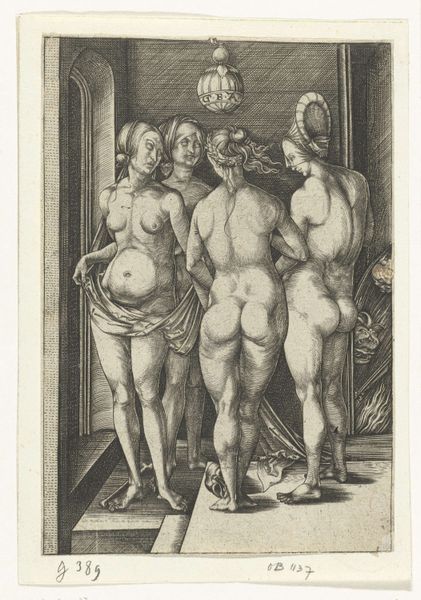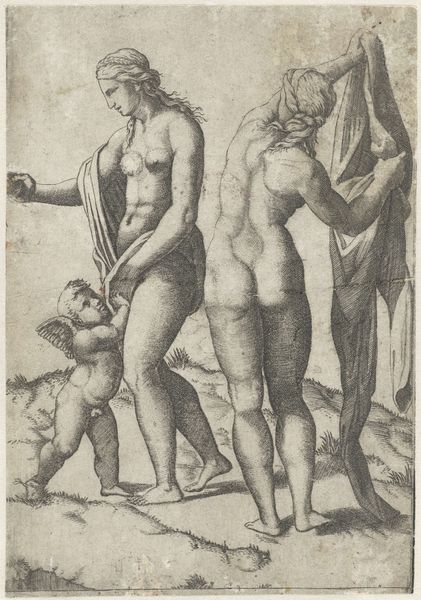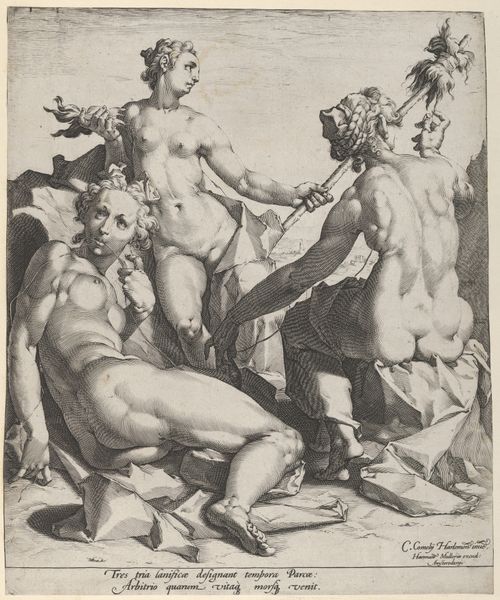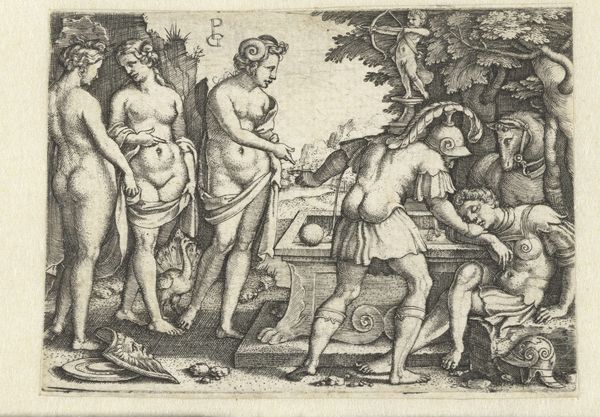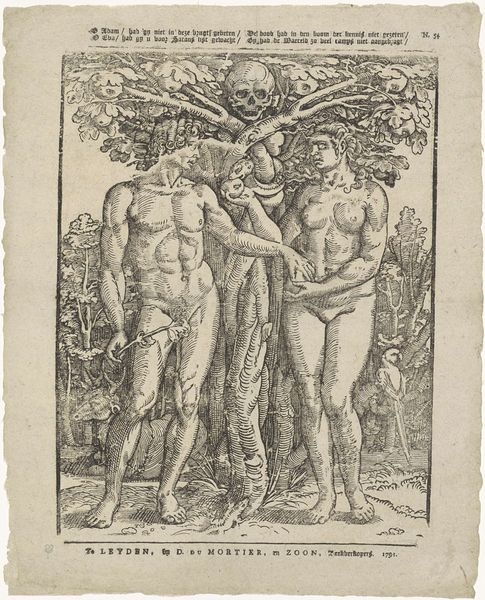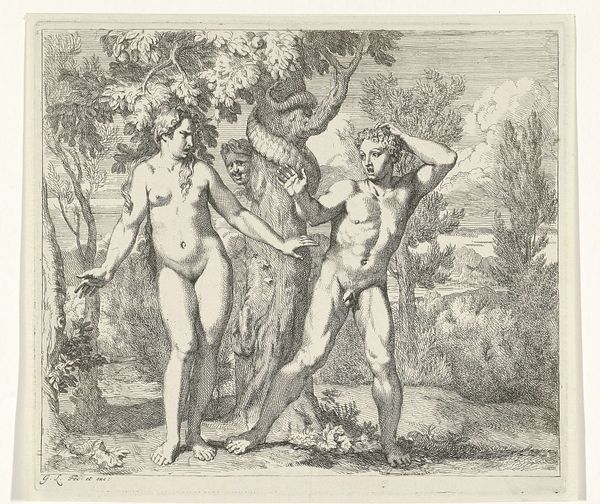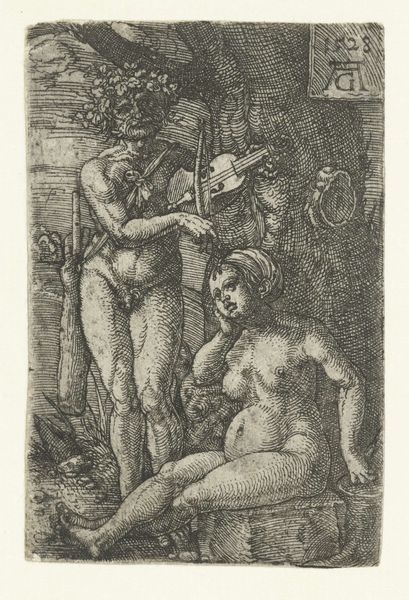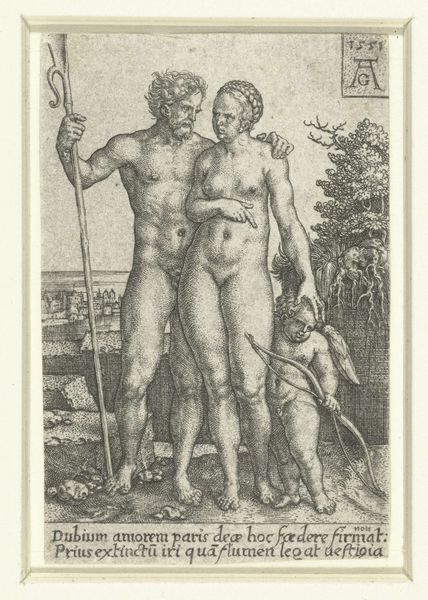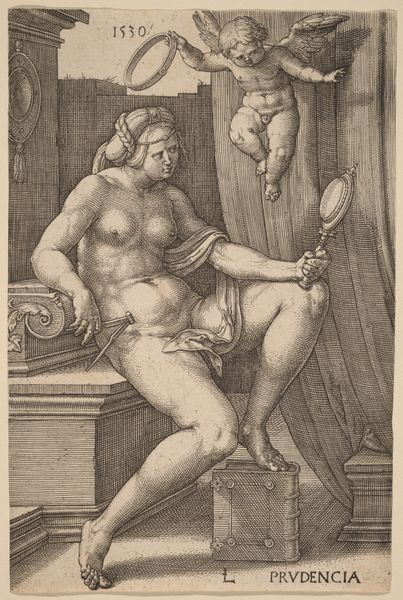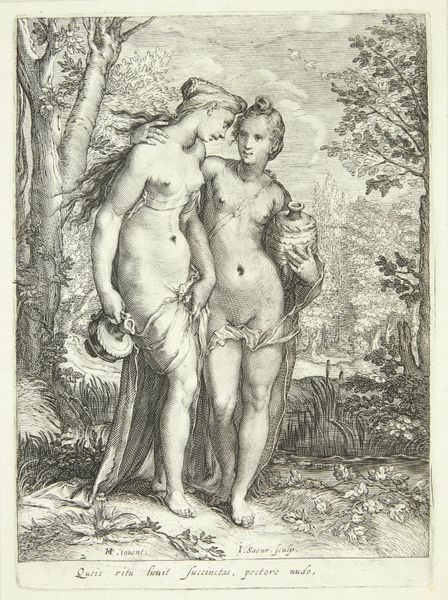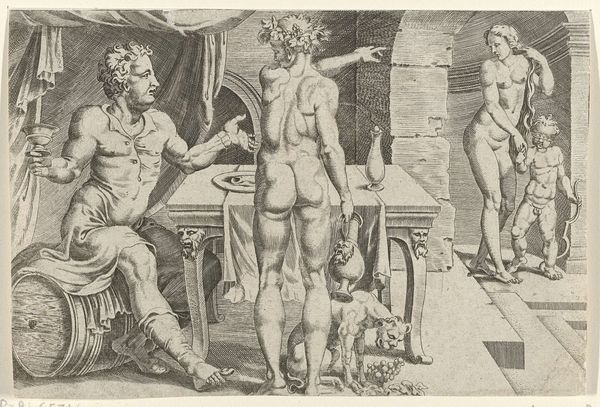
Dimensions: plate: 7 5/8 x 5 5/16 in. (19.4 x 13.5 cm)
Copyright: Public Domain
Editor: This is Albrecht Dürer's "Four Naked Women," created around 1497, an engraving currently housed at The Met. I find it quite striking how much detail he achieves with just lines. What is your read on it? Curator: This piece truly highlights the labor and material conditions surrounding printmaking at the time. The incising into the copper plate, the control required, speaks to a specific kind of skilled labor. Look at the textures—smooth skin contrasted with detailed hair—how was Dürer distributing ink, and what kind of paper did he use to produce varying depths and tones of shadow? The composition has layers of socioeconomic history etched into it. What impact did printmaking technology have on artistic styles during the renaissance, would you say? Editor: I see your point. Thinking about it now, it's not just an image but also an object, shaped by specific tools and skills. Printmaking did make art more accessible to the masses; maybe Dürer was also aiming to profit through wider distribution of images that previously were accessible to fewer people? Curator: Exactly. It allows us to consider Dürer not only as an artist, but also as a participant in an emerging market of image consumption. How does the material reality of the print itself—its portability and affordability—change the social function of the nude figure? Is it elevated art, a commodity, or both? Editor: That is really insightful. Thinking about the labor and the commercial aspect gives me a totally new perspective! Thanks for illuminating all of this for me! Curator: The pleasure is all mine. Looking at the processes and societal factors provides a much richer interpretation than aesthetic appreciation alone.
Comments
No comments
Be the first to comment and join the conversation on the ultimate creative platform.
